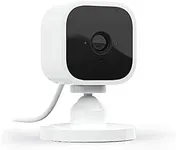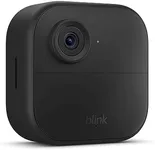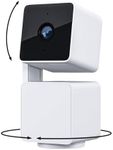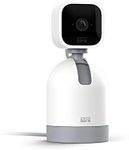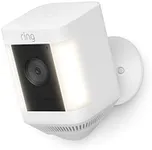Buying Guide for the Best Mini Security Cameras
When choosing a mini-security camera, it's important to consider several key specifications to ensure you get the best fit for your needs. Mini-security cameras are great for discreet surveillance and can be used in various settings such as homes, offices, or even outdoors. Understanding the key specs will help you make an informed decision and select a camera that meets your specific requirements.ResolutionResolution refers to the clarity of the video captured by the camera. Higher resolution means clearer and more detailed images. Common resolutions include 720p (HD), 1080p (Full HD), and 4K (Ultra HD). If you need to identify faces or read license plates, a higher resolution like 1080p or 4K is recommended. For general monitoring, 720p may suffice. Consider your need for detail when choosing the resolution.
Field of ViewField of view (FOV) is the extent of the observable area the camera can capture. It is measured in degrees. A wider FOV means the camera can cover more area, which is useful for monitoring large spaces. Typical FOV ranges from 90 to 180 degrees. For small rooms or specific areas, a narrower FOV might be adequate. For larger areas or outdoor surveillance, a wider FOV is preferable.
Night VisionNight vision allows the camera to capture clear video in low light or complete darkness. This is crucial for 24/7 surveillance. Night vision capabilities are often measured by the distance they can cover, such as 10 feet, 30 feet, or more. If you need to monitor areas at night or in dark conditions, ensure the camera has good night vision capabilities. The longer the distance it can cover, the better.
Motion DetectionMotion detection enables the camera to start recording or send alerts when movement is detected. This feature helps save storage space and ensures you are notified of any activity. Some cameras offer adjustable sensitivity levels to avoid false alarms from minor movements. If you want to be alerted to any activity in the monitored area, look for a camera with reliable motion detection.
Storage OptionsStorage options refer to how the camera saves the recorded footage. Common options include local storage (SD cards) and cloud storage. Local storage is often limited by the size of the SD card, while cloud storage can offer more space but may require a subscription. Consider how much footage you need to store and whether you prefer local or cloud storage. For continuous recording, cloud storage might be more convenient.
Power SourceThe power source of the camera can be either battery-operated or wired. Battery-operated cameras offer more flexibility in placement but require regular recharging or battery replacement. Wired cameras need a constant power source but can provide uninterrupted operation. Choose based on your preference for convenience and the availability of power outlets in the area you want to monitor.
ConnectivityConnectivity refers to how the camera connects to your network and devices. Most mini-security cameras use Wi-Fi, but some may offer wired Ethernet connections. Wi-Fi cameras are easier to install and more flexible in placement. Ensure the camera supports your network type and has a stable connection to avoid interruptions in monitoring. If you have a strong Wi-Fi network, a Wi-Fi camera is usually the best choice.
Audio CapabilitiesAudio capabilities include features like built-in microphones and speakers for two-way communication. This allows you to listen to and speak with people near the camera. It can be useful for monitoring entrances or interacting with visitors. If you need to communicate through the camera or want to capture audio along with video, look for a camera with good audio capabilities.
